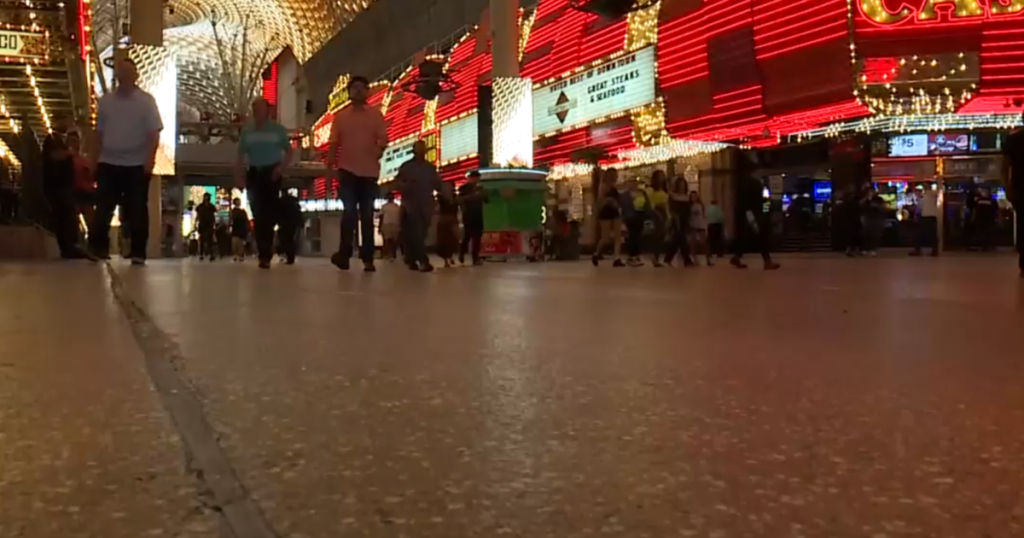Las Vegas, known as a prime destination for millions of tourists, is witnessing significant changes in visitor patterns this spring. As inflation impacts travel costs, the number of tourists appears to be declining, with many travelers noting higher prices. The Las Vegas Convention and Visitors Authority reported declines in both visitation numbers and hotel occupancy rates, raising concerns about the future of tourism in the area.
| Article Subheadings |
|---|
| 1) Tourist Trends Amid Rising Prices |
| 2) Declining Visitor Numbers: A Closer Look |
| 3) Impact on Hotel Occupancy Rates |
| 4) Challenges Facing the Tourism Industry |
| 5) Looking Ahead: Optimism for the Future |
Tourist Trends Amid Rising Prices
The iconic “Welcome to Fabulous Las Vegas” sign has been a staple for travelers but is now witnessing shorter lines this spring. Inflation has significantly raised prices for visitors, making the once-extravagant getaway feel less accessible. According to tourist John Fischer from the United Kingdom, prices are approximately 20% higher compared to the same time last year. He remarked on the shocking costs he faced during his visit, reinforcing a narrative of diminishing affordability for tourists. Another visitor, Stuart Woodfall, expressed disbelief over paying $9 for a coffee, which he noted was considerably more expensive than back home.
Declining Visitor Numbers: A Closer Look
Despite the high prices, convention traffic has not experienced a significant drop. However, casual visits are declining, with March experiencing a 7.8% decrease in tourists compared to the same month the previous year. April continued this downward trend with a decrease of 5.1% from 2024. The Las Vegas Convention and Visitors Authority (LVCVA) has noted that the total number of visitors for March stood at 3.39 million, a concerning sign for the tourism industry during a traditionally busy season.
Impact on Hotel Occupancy Rates
The hospitality sector is feeling the impact of reduced visitor numbers, with hotel occupancy struggling to stay afloat. April saw rates rise slightly, averaging $203 per night on the Strip, compared to $194 the previous year. Corresponding with these pricing adjustments, hotel occupancy dipped to 84.5%, down from 85.5% in April 2024. Steve Hill, CEO of LVCVA, explained that shifting consumer confidence is primarily driving these trends, which indicate a moderation in the past philosophy of filling rooms at all costs.
Challenges Facing the Tourism Industry
In addition to rising prices and declining occupancy, Las Vegas is facing a decrease in international visitors, who typically stay longer and spend more. According to Hill, these tourists often treat a trip to Las Vegas as a bucket-list experience, leading them to invest more time and money here. Losing this valuable customer demographic adds pressure to hotels and businesses that previously relied on their higher spending habits.
Moreover, heavy vehicle traffic due to ongoing construction and road closures is presenting another challenge for tourists. As noted by Will Tryon, co-owner of Adventure Photo Tours, many customers have expressed dissatisfaction with their experiences in navigating through heavy congestion, which leads them to reconsider future trips. Additionally, rising operational costs, such as fuel and insurance for tour providers, have led to increased prices for activities, further complicating budget decisions for potential visitors.
Looking Ahead: Optimism for the Future
Despite current challenges, optimism persists for Las Vegas, especially with an exciting summer lineup already in place. High-profile events, including concerts from artists such as Beyoncé and a residency from Dead & Company, promise to draw in crowds, along with festivals and sporting events scheduled throughout the season. Hill maintains a positive outlook, stating, “Las Vegas is gonna respond to this. We are going to have a great summer,” suggesting that businesses may find a way to adapt to the current climate.
| No. | Key Points |
|---|---|
| 1 | Visitor costs have increased, leading to shorter lines at major attractions. |
| 2 | Convention traffic remains steady, while casual visits have declined significantly. |
| 3 | Hotel occupancy rates have dropped slightly, reflecting reduced visitor confidence. |
| 4 | Fewer international visitors are impacting overall spending in the city. |
| 5 | Upcoming major events provide hope for recovery in the tourist sector. |
Summary
The current state of tourism in Las Vegas reflects a complex interplay of rising costs and changing visitor patterns. As inflation affects travel budgets and visitor confidence dips, the city must adapt to maintain its status as a key destination. While challenges abound, upcoming events may stimulate the market, providing a vital boost to the local economy and showcasing Las Vegas’s resilience.
Frequently Asked Questions
Question: How have rising prices affected visitors to Las Vegas?
Rising prices have led to a decrease in casual visits, with many tourists expressing shock at the higher costs of basic services, such as food and accommodations.
Question: What are the causes behind declining tourist numbers?
Declining tourist numbers can be attributed to inflation affecting travel costs, a significant decrease in international visitors, and a general decline in consumer confidence.
Question: What does the future of tourism in Las Vegas look like?
Despite current challenges, optimism remains for future tourism in Las Vegas, with several high-profile events planned that could attract visitors and stimulate the local economy.
